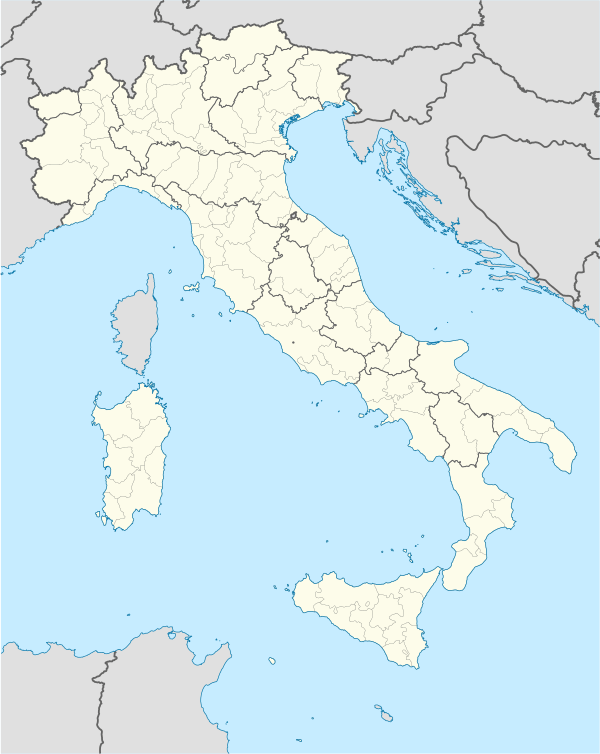Carmiano
| Carmiano | |
|---|---|
| Comune | |
| Comune di Carmiano | |
 Carmiano Location of Carmiano in Italy | |
| Coordinates: 40°20′45.96″N 18°2′45.96″E / 40.3461000°N 18.0461000°ECoordinates: 40°20′45.96″N 18°2′45.96″E / 40.3461000°N 18.0461000°E | |
| Country | Italy |
| Region |
|
| Province | Lecce (LE) |
| Frazioni | Magliano |
| Government | |
| • Mayor | Giancarlo Mazzotta (Civic list 'Insieme') |
| Area | |
| • Total | 23 km2 (9 sq mi) |
| Elevation | 33 m (108 ft) |
| Population (31 December 2012)[1] | |
| • Total | 11,988 |
| • Density | 520/km2 (1,300/sq mi) |
| Demonym | Carmianesi |
| Time zone | CET (UTC+1) |
| • Summer (DST) | CEST (UTC+2) |
| Postal code | 73041 |
| Dialing code | 0832 |
| Patron saint | Madonna Nostra and San Vito Martire |
| Saint day | 17 August |
| Website | Official website |
Carmiano is a town and comune in the Italian province of Lecce in the Apulia region of south-east Italy. Carmiano is in the heart of the province of Lecce and Salento. It is located 20 kilometres (12 mi) east of the Ionian Sea (Porto Cesareo) and 16 kilometres (10 mi) west of the Adriatic Sea (San Cataldo).
Fractions
Bounding communes
Coat of arms
Its coat of arms contains a tree with a star in a middle bordered with three brown stripes with a yellow gold rim with a golden crown at the top.
Geography
The commune is located in the area called the Valle della Cupa or the Cupa Valley and is siuated northwest of the Salentino cape. The terrain is mainly flat and features olive crops as well as fruits and vegetables along with cattle and others.
Population History
| Year | Population |
|---|---|
| 1861 | 1,987 |
| 1871 | 2,164 |
| 1881 | 2,542 |
| 1901 | 3,364 |
| 1911 | 4,241 |
| 1921 | 5,179 |
| 1931 | 6,514 |
| 1936 | 7,204 |
| 1951 | 8,691 |
| 1961 | 9,252 |
| 1971 | 10.033 |
| 1981 | 11,548 |
| 1991 | 12,176 |
| 2001 | 12,160 |
| 2006 | 14,700 |
| 2012 | 11,988 |
The population has been growing since 1861 and slowed slightly between 1961 and 1981, the population slightly declining by 16 between 1991 and 2001, in the 1930s, it surpassed its neighboring population of Leverano and again surpassed in the mid-2000s where it is at the present level.
History
The origin of the communal name probably comes from the colour "carminium" (red), another one that it came from a name of the Roman centurion "Carminius" which assigned to the Roman Senate, the land at the time was in the area of Messapia and was situated in the country.
References
- ↑ Population from ISTAT